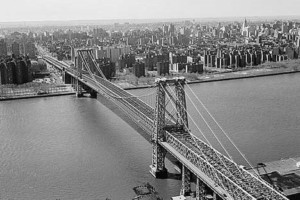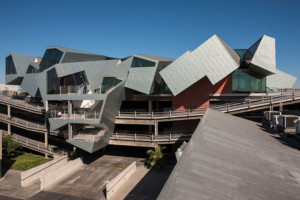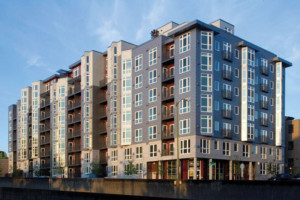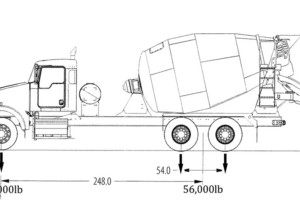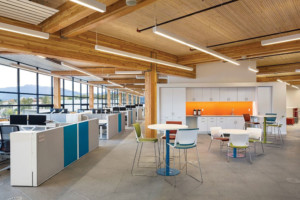The Williamsburg Bridge across the East River in New York City is now over 100 years old. After a complete rehabilitation, it is still considered by some the “Ugly Duckling” of suspension bridges. In May 1883, the Brooklyn Bridge opened over the East River between New York City and Brooklyn. Even before the Brooklyn Bridge opened, however, residents of Williamsburg created an organization to pressure politicians for a new bridge. No real action resulted from this pressure. …
Review Category : Articles
NAST Enterprises Corp. was an Outstanding Award Winner for its Pterodactyl project in the 2016 NCSEA Annual Excellence in Structural Engineering Awards Program in the Category – New Buildings under $10M.
The “Pterodactyl” is a uniquely engineered office building, conceived for an advertising agency, constructed above a previously designed four-story parking garage structure in Culver City, Los Angeles. …
A Long Overdue Wake-up Call
I have been watching, with some interest as the recent drama unfolded, the effort to block the adoption of the American Society of Civil Engineers’ ASCE 7-16 into the 2018 International Building Code (IBC). I was particularly amused to see the way that the structural engineering community has rallied in defense of a standard that they openly despise. If you get more than two structural engineers in a room, it is only a matter of time before they start complaining about the latest edition of ASCE 7 and the misery that it has brought to their practice. …
A Rebuttal
Jim DeStefano raises many good points as to the complexity of the building codes in general and the ASCE 7 standard in particular. I have made these same arguments many times over the years, in this same magazine and other venues. However, the challenges to adoption of ASCE 7-16 had nothing to do with code complexity or changes in design procedures. …
Taking Control of Business Expectations
Just the other day I was talking with a client and said, “I will fax that to you in a few minutes.” That might have been one of the first “senior moments” of my life, or at least the first I remember. I caught the mistake right away, and we both had a chuckle about how far technology has come in the course of our careers. However, the incident got me thinking about our use of technology. …
Are You Taking Full Advantage of CEU Opportunities?
Are you investing in your future or wasting your time and money on CEUs? CEUs are an investment in your future and, like all significant purchases, should be taken seriously. …
Part 1: Path to Code Acceptance
Nationwide, there has been an increase in the demand for multi-story mixed-use and multi-residential structures. Common configurations include up to five stories of residential use over retail, commercial, office, and parking occupancies, similar in configuration to the building shown in Figure 1. Podium designs are one way to maximize the number of stories, increase unit density, and lower construction costs. This article covers important design considerations and traditional approaches related to the design of a five-story wood-framed structure over a two-story concrete or masonry podium. …
In typical tilt-up construction, the slab-on-grade is the working surface for the lifespan of the building. Certain situations, such as otherwise inaccessible panel casting beds, demand the use of the slab as a path of access for construction vehicles like concrete trucks. These trucks, when full, can exert high loads and pose a risk to the slab’s serviceability. …
A Literature Review
Seismic building design has typically been based on results from conventional linear analysis techniques. This type of analysis is a challenge for the design of reinforced concrete because the material is composite and displays nonlinear behavior that is dictated by the complex interaction between its components – the reinforcing steel and the concrete matrix. …
Mass timber building systems are becoming more popular throughout North America as creative and cost-effective alternatives to concrete and steel construction. While post and beam timber frame buildings have been around for centuries, new panelized products have begun to change the way we build with wood. …

